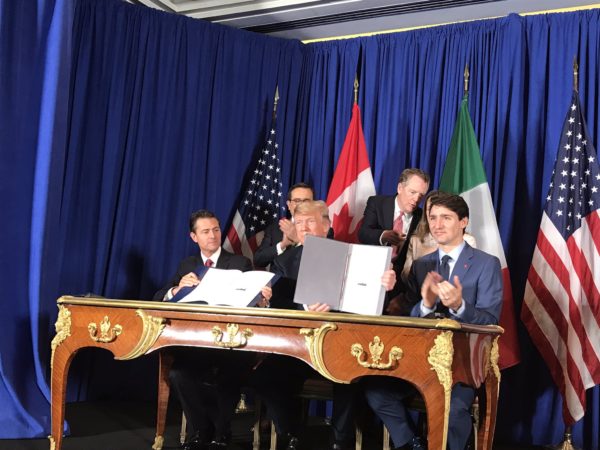
Despite the hyper-partisan political landscape in Washington, on January 16, 2020 the Senate approved the USMCA trade deal. Congress had previously passed the legislation on December 19, 2019 by a vote of 385-41, and Mexico’s Senate passed the legislation on June 19, 2019 by a vote of 114-4. That leaves only Canada’s Parliament left to ratify the successor to NAFTA — which may not be as straightforward as once expected.
That’s because the Canadian government is currently led by the Liberal Party, which has a minority of seats in the House of Commons (a.k.a. Parliament). For those unfamiliar with the Westminster system, this basically means that the Liberal Party — which was in power during the extensive and often thorny negotiations that brought about the USMCA — does not have enough votes to unilaterally ratify the new trade deal. As such, it must “reach across the aisle” and get support from at least 13 Parliamentarians from other parties; namely the Conservatives (right-leaning), the New Democrats (left-leaning), or the Bloc Quebecois (based in the Canadian province of Quebec, and mandated to exclusively focus on promoting legislation that benefits Quebec).
However, those who have been eagerly waiting for the trade uncertainty to end — everyone from cross-border shoppers buying organic kratom, to giant logistics and manufacturing companies — can probably afford some cautious optimism, given that there are likely enough votes among the pro-business Conservatives to push the USMCA through the Canadian parliament sometime during 2020.
While NAFTA was not wholly beloved in Canada — particularly across labor groups — the USMCA is even less popular. Among the most vocal opponents is the country’s small, yet politically powerful dairy producers who have historically benefited from strong protective quotas (which Canadians call “supply management”) to keep U.S. dairy producers from tapping into the lucrative Canadian market valued at $16 billion annually. While these protective quotas still exist in the USCMA, they have been significantly weakened — fulfilling a longstanding Trump campaign promise. Another major change is the sunset clause, which calls for the USMCA to expire 16 years after trilateral ratification. However, to avoid trade chaos, the deal is subject to review every six years, at which time the three countries can mutually agree to extend it if they wish. Considering that it took more than two years to negotiate the USMCA, it’s hard to imagine that any potential extensions will be any less complicated, confrontational or controversial. Time will tell, and we’ll be watching closely.
